Beatles Day Tripper Guitar Lesson [Riff Rhythm Solo]
This Paluzzi Guitar Lesson will show how to play Day Tripper by the Beatles.
Lesson Plan/Guitar Tab
https://12a8507c-516b-2ae5-5b6d-45935a0049c2.filesusr.com/ugd/6781a9_5bc71d6dfbb448a1bcc5daa946508141.pdf
Beatles Day Tripper Guitar Lesson [Riff Rhythm Solo]
0:00 Lesson Intro
0:16 Verse Riffs
3:15 Verse Riffs
4:32 Intro/Verse Rhythm
8:22 Chorus
11:16 Bridge Riff
13:38 Guitar Solo
16:39 Bridge Rhythm
20:52 Coda
21:35 Lesson Review
With this Beatles Day Tripper guitar lesson, we'll show you how to play all the essential lead and rhythm guitar parts. With guitar tabs and chord diagrams, we'll cover each section of Day Tripper with a step by step approach.
With the classic opening riff played by George Harrison, ‘Day Tripper’ also features some unique chord voicings played on rhythm guitar played by John Lennon. This lesson will focus on the essential lead and rhythm guitar parts played throughout the Intro, Verse, and Chorus sections.
How to Play Opening Riff to Day Tripper
This signature guitar riff to Day Tripper is an example of applying ostinato, which is a technique of repeating the same riff throughout a progression while building around it with additional melodies and rhythms. Other instruments are layered over the Day Tripper riff as it repeats, with the bass guitar added in on the second measure, rhythm guitar and tambourine added on the third measure, and drums added on the fifth measure.
When playing the main riff to Day Tripper, keep the fretting hand steady and in position by using the finger numbers shown below the tab. The first finger will temporarily flatten across the second fret to fret the two notes played consecutively along the second fret.
How to Play Rhythm Guitar to Day Tripper
John Lennon plays unique ‘E’ and ‘E7' chord shapes, with open strings combined with the fretted notes. The fourth/‘pinky’ finger simply lifts off the fourth string (where the second finger is ‘anchored’) to switch to ‘E7'.
The initial ‘x’ in each measure can either be a palm-mute or an ‘E’ note (open sixth string) played along with the first beat.
There is no consistent rhythm guitar strum pattern for Day Tripper. The only consistent rhythm with Day Tripper is with the drums. A suggested strum pattern for Day Tripper is shown for the rhythm guitar on the Tab. This Day Tripper strum pattern for rhythm guitar can also be ‘spoken- out’ as: ‘bass - da-dun-da - da-da-da-da - da-dun-da ’ (‘bass’ = the bass drum beat, and the ‘dun’ = ‘E7'.)
Both lead and rhythm guitar parts to Day Tripper follow a ‘I-IV-I’ progression, with the main riff shifting up one string for the ‘A’ (‘IV’) section while the rhythm guitar shifts to ‘A7’. An alternate strum pattern for the ‘A’ section of Day Tripper (which follows the ‘E-E7’ section) can
also be applied.
There is no consistent strum pattern for the Day Tripper Chorus. When playing along with drums, a more ‘choppy’ feel can be played via palm-muting.
Beatles Day Tripper Songfacts
The Beatles recorded 'Day Tripper' at their first session after completing 'Drive My Car'. The 'Day Tripper' session took place at EMI Studios (now Abbey Road Studios) in London on 16 October 1965. The Beatles rehearsed Day Tripper for much of the afternoon before taping the basic track. The line-up for Day Tripper was John Lennon and George Harrison on rhythm and lead guitar, respectively, Paul McCartney on bass and Ringo Starr on drums.
Lennon and McCartney overdubbed lead vocals, with McCartney the more prominent singer in the verses' first and third lines, and Harrison added a harmony vocal over the choruses and the instrumental bridge. Starr overdubbed the tambourine.
Music journalist Rob Chapman views the guitar interplay on "Day Tripper" as an example of the Beatles' "baroque sonata" approach to musical arrangements. Harrison played the bridge's rising scale using a guitar volume-pedal effect, and overdubbed a second lead guitar part over the same section. After completing Day Tripper late that evening, the Beatles recorded the basic track for "If I Needed Someone" in a single take.
Paluzzi Guitar
The objective of the Paluzzi Guitar video series is to help establish a foundation of guitar fundamentals by applying various playing techniques (rhythm, fingerstyle, and soloing) to various styles of music. The more playing styles and techniques a guitarist can learn, the more diverse and self-sufficient a guitarist will become. A self-sufficient guitarist can then teach themselves, communicate with other musicians, and even write their own music once a solid foundation of fundamentals is established.
The Creative Guitarist Method Series was written and designed by Kevin J. Paluzzi of Paluzzi Guitar Instruction in San Diego, CA. For more information on private lessons and books, go to:
-
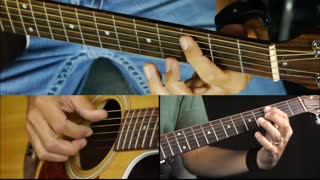 16:45
16:45
Center Stage Guitar Academy
3 years ago $0.21 earnedBlackbird Guitar Lesson - Beatles - Fingerstyle Guitar
7614 -
 10:18
10:18
LasVegasGuitar
3 years ago $0.04 earnedI Will by the Beatles Guitar Lesson
194 -
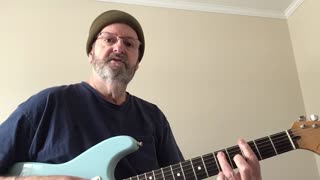 2:59
2:59
BluesGuitar
3 years ago $0.30 earnedKey of G blues rhythm guitar lesson
1K12 -
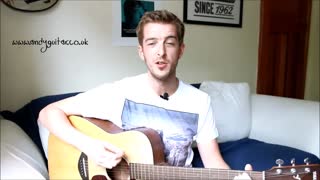 18:02
18:02
Speedracer100
3 years agoFirst Time Guitar Lesson
59 -
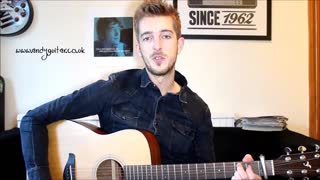 12:13
12:13
rookiefaculty
3 years agoHey Jude - The Beatles Guitar Lesson - Easy beginner Guitar songs (How to play)
16 -
![America A Horse With No Name Guitar Lesson [Rhythm Strum Solo]](https://hugh.cdn.rumble.cloud/s/s8/1/F/o/P/e/FoPec.0kob.a-small-America-A-Horse-With-No-Nam.jpg) 22:08
22:08
PaluzziGuitar
2 years agoAmerica A Horse With No Name Guitar Lesson [Rhythm Strum Solo]
764 -
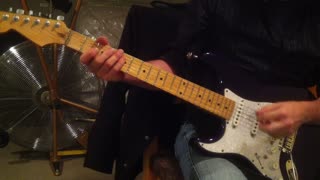 4:24
4:24
Guitar Lessons With Lefty
3 years ago $0.01 earnedAdvanced Rhythm Guitar Study - California Stars - Wilco - Guitar Lesson / Tutorial
171 -
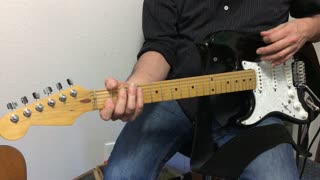 1:37
1:37
Guitar Lessons With Lefty
3 years agoBlues Rhythm Guitar Tutorial - Topanga Canyon Blues - Guitar Lesson / Tutorial
2112 -
![Led Zeppelin Stairway to Heaven Guitar Lesson [Part 3 - Rhythm Strum]](https://hugh.cdn.rumble.cloud/s/s8/1/H/S/P/4/HSP4b.0kob.7-small-Led-Zeppelin-Stairway-to-He.jpg) 19:05
19:05
PaluzziGuitar
3 years agoLed Zeppelin Stairway to Heaven Guitar Lesson [Part 3 - Rhythm Strum]
299 -
![Led Zeppelin Stairway to Heaven Guitar Lesson [Part 2 - Rhythm Strum]](https://hugh.cdn.rumble.cloud/s/s8/1/t/p/b/4/tpb4b.0kob.5-small-Led-Zeppelin-Stairway-to-He.jpg) 11:27
11:27
PaluzziGuitar
3 years agoLed Zeppelin Stairway to Heaven Guitar Lesson [Part 2 - Rhythm Strum]
660